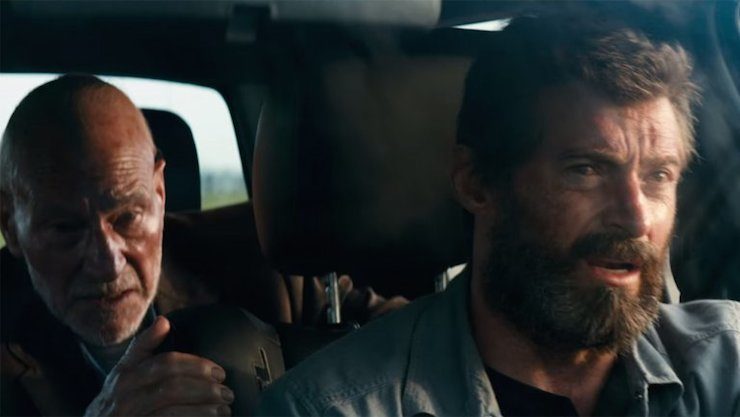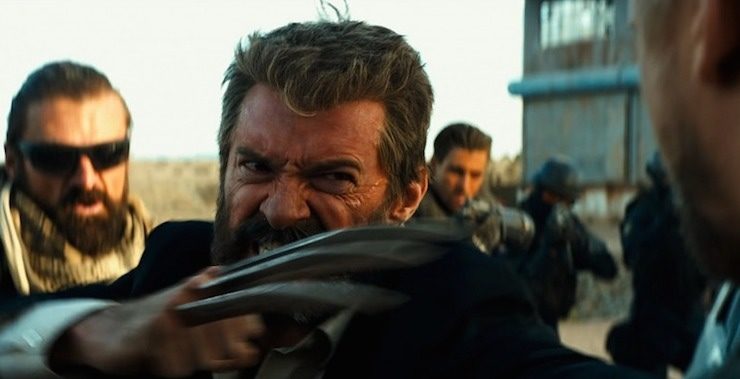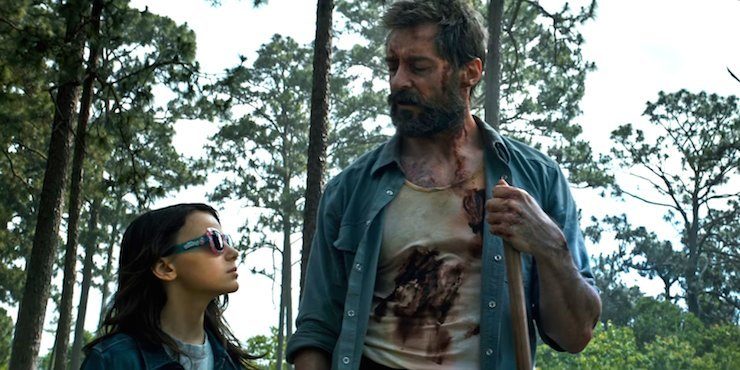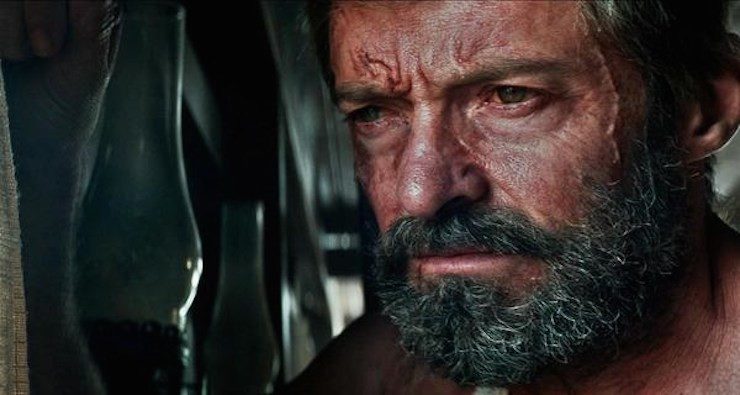There was a moment in 2000’s X-Men. You know the one. The moment where it was clear that the movie was a little bit different from its predecessors. All of the superhero movies previous had given us moments of pain, of loss, of formative angst writ large across the screen. They were effective, but they weren’t real in all those little ways that count.
But in X-Men, Rogue sat in Wolverine’s beat up truck and looked at his knuckles where the signature adamantium claws released. “Does it hurt?” she asked. “When they come out?”
And he took a moment. And then he said: “Every time.”
That was it. That was the moment when you knew that X-Men movies–that superhero movies altogether–could be different. So when I say that the latest and final Wolverine movie is like getting repeatedly punched in the mouth by that moment, I want you to take my full meaning. This is not a film for people who want their movies tidy and fun and overall kind. But the fact that it exists at all is a testament to the genre, and a new mile marker for live action superhero fiction.
[Spoilers for the film below.]
The year is 2029 and mutants are largely extinct—no new ones have been born in years. Logan has Charles Xavier locked away in a bunker of sorts just inside the Mexican border so that one of world’s most powerful mutants isn’t endangered by a world that has no room for him anymore–and so he can’t endanger anyone either. Charles has harmful and powerful seizures without medication, and Logan is doing his best to save up for a boat in the hopes that he can get them far away from anyone who would harm them. But then a woman contacts Logan about a young girl named Laura, who was created for a lab called Transigen from his DNA. Laura and all the children like her were too independent to be used as bred weapons, and now the company needs to destroy them in favor of a new model… so the children have all tried to escape. And Logan is Laura’s only hope of survival.
The only true choice is to get this X-Men comic-reading kid where she can be safe. Logan, Charles, and Laura get in the car and drive for what may be freedom… or a dream invented by the desperate.

For fans familiar with Mark Millar’s Old Man Logan run that the filmmakers borrowed heavily from, there are many tonal similarities (the western genre trappings, the extreme violence, the road tripping, the tattered and bruised leads), but the plot is a different beast altogether and so are the emotional underpinnings of the story. To start, this is the first X-Men film to truly bring age and disability to the forefront of the conversation where mutation and powers are concerned. Logan’s body is failing him in a way that it never has before, and watching him manage these failings one small concession at a time is a lesson in patience and management. (Their also might not be anything more endearing on this earth than Wolverine in reading glasses.) Their friend Caliban has his mutation used against him by virtue of being so vulnerable to physical harm. Charles Xavier’s mind—once one of the most powerful assets on the planet, legally classified as a WMD for all intents and purposes—has deteriorated to the point where where he has to permanently keep out of sight, out of mind. What had once made these people seem invincible and frightening to the rest of the world is now expertly turned against them, due to nothing but time and the wear and tear of moving through the world.
The themes are tackled boldly in a way that only genre fiction can truly manage. When a family member has dementia or Alzheimer’s and they forget to take medication or wander away from home, they don’t mean to cause any difficulty, but it doesn’t stop them from worrying or hurting the people they love. In Charles’s case, the hurt that he causes is a tangible truth that costs lives—and that understandably destroys a man whose greatest joy was his ability to provide for others. That Charles Xavier would lose this through no fault of his own is a harsh look at the very nature of mortality, one that the advent of superpowers only exacerbates.
This is arguably one of the greatest performances of Patrick Stewart’s career, and that is no small feat for a man who is already known for his ability to bring gravitas to fanciful tales in need of grounding. What’s more, within the film he deftly marries his version of Professor X with James McAvoy’s feistier, rougher version of the character. The throughline between these two incarnations comes through here with every flippant reply, every standoff, every moment of personal vulnerability that Charles displays. We can see him revert back on older behaviors, drop his professorial sheen and lay into Logan every time he feels that he’s being ignored. To watch a man who had once commanded such loyalty succumb to the most human of deterioration throws the struggles of real people into sharp relief.
The violence of this film is brutal, but serves to drive home the stakes of this story—this is not about primary color clashes, good guys and bad guys duking it out or coming together against a unimaginable foe. Fighting for the right to exist is a brutal and unattractive struggle. It forces you to make choices no human being should ever have to make. It cannot, by its very nature, be a clean-cut thing. It prevents the more graphic moments from becoming gratuitous and seems to subtly ask the audience why Wolverine is a character so applauded for his ability to do damage; after all, it has never been what has made him good or even interesting.

Hugh Jackman is no longer weighed down by the unnecessary melodrama of the previous Wolverine films. The character he played for nearly twenty years has always been at his most powerful in his quieter moments, rather than the points where he screams and sobs to the heavens, and now he gets to put all those muscles to good use. For his last(?) ride, the character reads like a comfortably worn leather jacket on Jackman’s person, and it fits him better than it ever did. His rapport with young Laura is less the stuff of feel-good family discovery, and more a story of two survivors who have never known how to do anything but push ahead. She’s not simply his daughter, she’s his clone, and there are points where you can almost see them sync up to one another in a deeply uncanny way.
It’s hard to imagine that the people making this film knew precisely how relevant it would be in the current climate, but there’s no mistaking the politics running through it. We witness immigrants being deported to Mexico, the country being one of the few places Logan feels he can hide himself and Charles. The children from Laura’s group are running for asylum across the opposite border to Canada. Transigen used Mexican women as little more than incubators for their live mutant experiments. The black family that invites Logan, Laura, and Charles into their home are being intimidated by powerful people who want their land, and are then murdered for their kindness to strangers. A bunch of party-happy frat types who hire Logan’s limo for the evening hang out of the sunroof shouting “USA! USA!” at the downtrodden folk on the sidewalks. It’s in the future, but close enough that the world is familiar, with no great advancements made outside of those designed to control the very people that the X-Men were meant to protect.
But what prevents Logan from devolving into a celebration of gore and sadness for the sake of it is precisely what makes the X-Men great; try as he might, Wolverine cannot escape the central tenets of Professor X’s creed. When they see that family get run off the road on a highway, Logan tries to get out of helping them, knowing that they have precious little time to put distance between themselves and the people after Laura. He insists that someone else will come and help, and Charles replies, “Someone has.” Despite every terrible thing that has happened—is still happening—Charles Xavier never stops believing that it’s their duty to help others, no matter the cost. And because Charles never stops believing, neither does Logan.

It seems fair to say that the movie’s only major downside is that Dafne Keen’s beautiful turn as Laura (X-23) will likely not result in her own film franchise featuring all of her friends from Transigen. This extraordinary group of kids are the kind of X-Men team we deserve on screen going forward. Right now, their struggles feel more immediate than watching the old school crop of X-Men in the ’80s do their thing. But Logan has taken another important step in reminding us of what these stories can achieve if we are willing to break with format and really examine how superheroes have become current mythology—by reflecting our humanity back at us, one seismic struggle at a time.
Emmet Asher-Perrin pretty much cried through this entire movie (thanks, Charles Xavier). You can bug her on Twitter and Tumblr, and read more of her work here and elsewhere.










